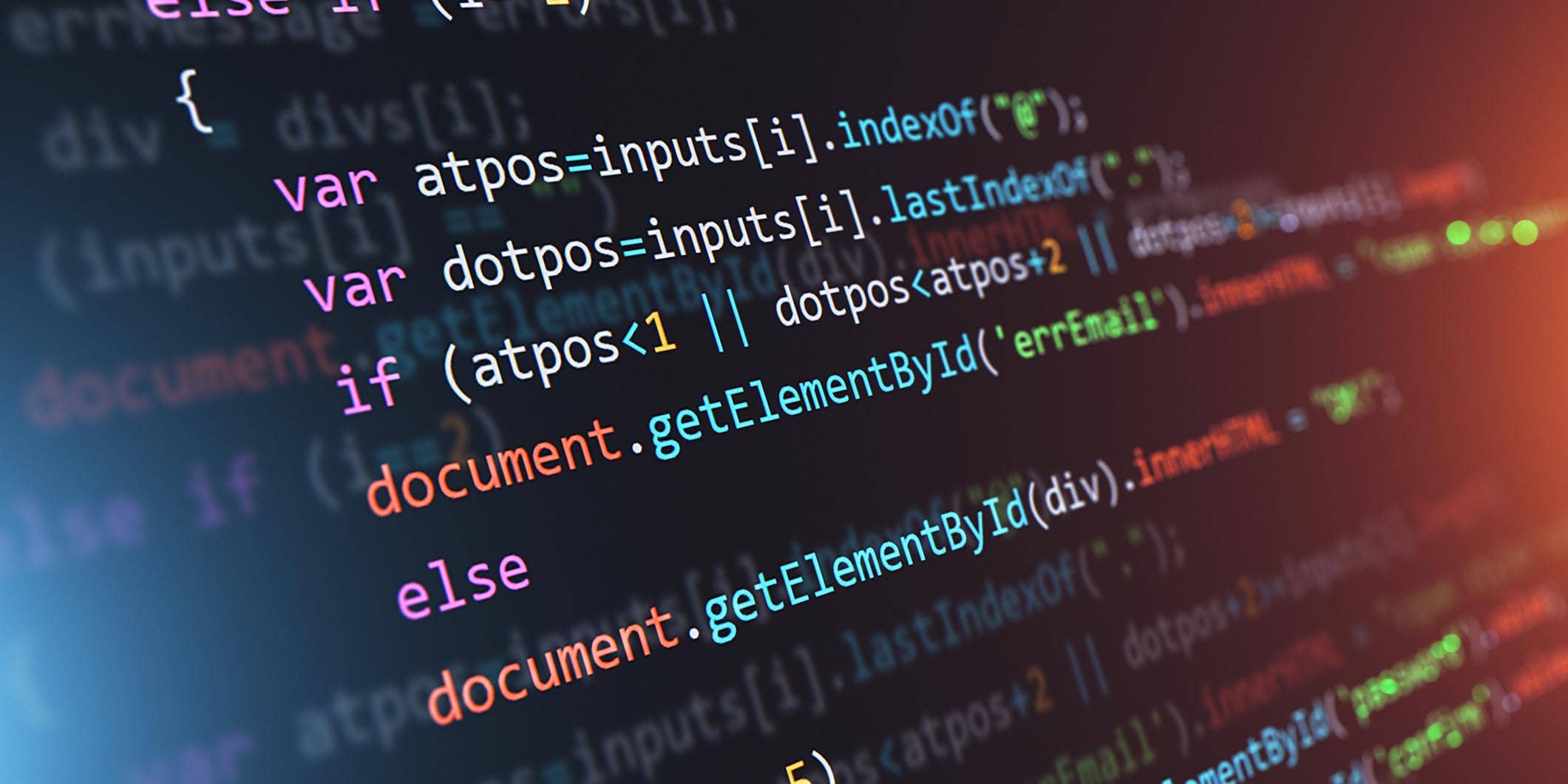Chatea con Ava - Tu consultor de negocios IA
¡Hola, soy Ava, tu guía de IA para potenciar tu negocio!
Ya sea que dirijas una empresa o sueñes con iniciar una, estoy aquí para hacer realidad tu visión gracias a los freelancers que usan IA. Comparte los objetivos de tu negocio y juntos crearemos un proyecto en los que nuestros talentosos freelancers puedan ofertar. ¡Hagamos realidad tu visión!
Tengo un negocio
Estoy comenzando un negocio
Algo salió mal al enviar la conversación a tu correo electrónico. Por favor, intenta de nuevo más tarde.
Solo puedes guardar tu conversación una vez por hora. Por favor, intenta de nuevo más tarde.
Tu conversación es demasiado corta. Sigue chateando con Ava para poder guardar.
The top machine learning skills you need
Machine learning is exploding in popularity so it's important to understand how this technology can be applied to your business. We've broken it down.
28 jun 2019 • Lectura de 6 minutos
Actualizado el 7 feb 2020 por Adam S.

Content Manager at Freelancer.com
Falló el copiado al portapapeles. Intenta de nuevo después de ajustar tus permisos.
Copiado al portapapeles.

If you're a programmer who's decided to specialize in machine learning you've made a very wise choice.
Machine learning programmers are growing in demand and that trend is not expected to change, since data just keeps getting bigger and bigger.
If you want to keep yourself as employable as possible it's imperative for you to master the most sought-after machine learning skills. But before we dive into these algorithms, here’s a bit of background knowledge:
We have reached a stage in our technological development where computers no longer require human input in order for them to know which tasks need to be executed. They can now think for themselves.
Yes, you read that correctly. Computers can now write their own programs.
While this doesn’t mean you should worry about your computer autonomously compiling your recent search history into a catchy pop song, this does mean that a new exciting world of data analysis has dawned on us.
Welcome to the wonderful world of machine learning.
Featured Work in Programming

Conversion PSD to HTML
by puneetjaini

Bitrix24 Installation
by d1mf13

Ticketing System
by jameer8879

Delphi Application to Consume SOAP
by qprotex
What is machine learning?
Machine learning, in its most simplistic form, is the language that teaches computers how to learn.
This field of computer science was pioneered by engineers who figured out how to program a computer to recognize different sets of patterns. It has since then evolved into a programming language that can autonomously alter its own program depending on the type of data it's exposed to.
Ever notice those oddly relevant movie recommendations in Netflix?
That’s machine learning.
Traffic predictions in your navigation app?
Yep, machine learning.
Weird warm smell on the bus?
Nope, not machine learning. Definitely not machine learning.
Why is machine learning important?
Machine learning is important because data is important.
Hidden within the deep crevices of data are the answers to the important questions big businesses are asking.
Questions like:
Why do customers do what they do?
And:
What could be done to increase sales?
In order to extract the right answers to these questions, effective models need to be created to illustrate them.
Big data is very dynamic and always evolving. You therefore need machine learning that is capable of moulding to such ever-changing data.
How does machine learning relate to artificial intelligence?
Contrary to the opinions of many, machine learning and artificial intelligence are not the same thing. Machine learning is an application of artificial intelligence.
Think of artificial intelligence as a “brain,” and machine learning algorithms as the neurons of this brain.
With the stage set, let’s now dive into the top machine learning skills your employer will love!
The top must-know machine learning algorithms
To illustrate the application of machine learning and its most useful algorithms, in this post we will run through the solution to the following case study:
You have had a history of rocky relationships and you want to anticipate when your current spouse is likely to break up with you. In this case we will need to implement a method of machine learning known as “Supervised Learning.”
Supervised learning algorithms can predict future actions based on historical data.
To tackle this problem you’d start by compiling all of the data points pertaining to all of your previous successful relationships (we’re being generous here and assuming you’ve had at least some success):
This data could contain details such as:
All of this data would then be compiled into an array and labelled as “correct” or “things are going well, Mom.”
You would then compare all new data against this ultimate standard in order to track the success of your current relationship.
A set of machine learning algorithms will recognize all of the worrisome patterns within the new data set that could lead to your relationship failing miserably.
These algorithms are super useful to have in your machine learning toolbox, let’s go over each of them:
Classification
Classification is the method of classifying data.
Data can be classified into different categories depending on the outcome that is being predicted.
Classifications can either be:
Freelance Programming Experts


Proofreading
Excel
SQL
Powerpoint
Software Architecture


PHP
C Programming
Java
JavaScript
Python


PHP
JavaScript
Website Design
Graphic Design
AJAX


PHP
Python
Script Install
Windows Desktop
System Admin
In our scenario, not laughing at a joke you’ve made would be classified as “not wife material.”
Here are the 3 most popular methods of classifying data:
1. Decision Trees
A decision tree uses a sequence of rules to split data using a tree-like model.
Data is constantly fed into the tree and split until the results are as “pure”as possible, or most likely to be free of errors.
2. K - Nearest Neighbour (KNN)
KNN is a very archaic method of cleaning up distributed data.
This algorithm classifies data based on its relationship to neighbouring data.
For example, if the majority data points located within a given radius (K) are closely related to one another, that data set can then be classified under a given label.
3. Random Forest
Random forest algorithms are a very popular classifier, they are highly accurate and super fast!
Random forests use the average outputs of multiple decision trees in order to create a highly accurate classification.
Random forest algorithms LOVE big sets of data.
The supervised machine learning method of classification is used in tandem with other machine learning algorithms in order to create accurate predictions.
Some of the primary ones are outlined below:
Regression
Regression can be thought of as a one dimensional estimate to multi-dimensional data:
There are different regression models you can implement depending on the complexity of the data spread.
Prediction explanations
Regression algorithms, tree based algorithms and neural networks can all be used to formulate a prediction of the most likely outcome.
When making a prediction, in order to satisfy your employer, you need to also provide an explanation of that prediction.
Prediction explanations outline the key variables that dictated the outcome of a given scenario.
In our scenario, a prediction explanation would provide the much needed “closure” to our failed relationship.
The most effective prediction explanation library to use for you machine learning algorithms is SHAP (SHapley Additive exPlanations). SHAP creates beautiful visualizations that clearly outline the relevance of key features to a certain prediction.
Predictions can be illustrated via different visualization models.
Here is a list of some of the most important ones to be aware of:
Here is an example of a summary plot pertaining to the market value of a given home.
The list of acronyms on the left represent different factors that affect the price of a home. The factor at the very top (LSTAT) refers to the lower status of a population. The factor directly below that (RM) represents the number of rooms of a given household. The bar on the right represents the relevance of each feature to the overall outcome (price of a home).
We can see that the top two factors that affect the price of a given home in this data set are LSTAT (Lower status of the population) and RM (Number of rooms).
With some color association we can see that the more negative the LSAT value and the more positive the RM value the higher the likelihood of a house to have a high valuation.
Which makes sense, really. If you have a residential area with less “lower status” individuals and more homes with a high number of rooms, there is a high chance of a home in this area having a high market value.
In our scenario, a summary plot would be the most relevant prediction explanation model to use.
An extremely positive SHAP value for the feature “body odor” might help you finally pinpoint the reason for all of your failed relationships and therefore increase the odds of your next one being a success.
Conclusion
So there you have it, if you master supervised machine learning and all of its subset algorithms, not only will employers find you irresistible, but you will also avoid another soul-crushing break-up by preemptively ending a fruitless relationship.
[[related_portfolios=[tag="Programming"]]]
[[related_portfolios=[tag="Programming"]]]
Cuéntanos qué trabajo necesitas encargar
Ingresa el nombre de tu proyecto
Historias relacionadas
Habla con uno de nuestros Copilotos técnicos para que te ayude con tu proyecto
Artículos recomendados solo para ti

If you want to stay competitive in 2021, you need a high quality website. Learn how to hire the best possible web developer for your business fast.
11 min read

Want to get into web development but don't know whether to be a front end or back end dev? We'll teach all of the skills required for both jobs.
8 min read

Scaling your startup is a delicate balancing act. Scale too quickly and your funding is depleted. Scale too late you've missed your opportunity.
23 min read

Struggling to come up with the best idea? Our exhaustive guide runs through the idea generation process to help you tap into your inner Steve Jobs.
10 min read
¡Gracias! Te hemos enviado un enlace para reclamar tu crédito gratuito.
Algo salió mal al enviar tu correo electrónico. Por favor, intenta de nuevo.
Cargando visualización previa
Permiso concedido para Geolocalización.
Tu sesión de acceso ha expirado y has sido desconectado. Por favor, inica sesión nuevamente.




